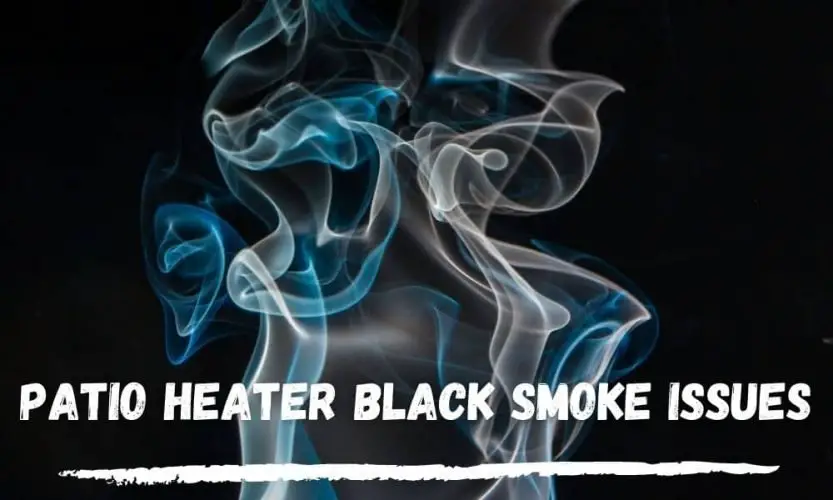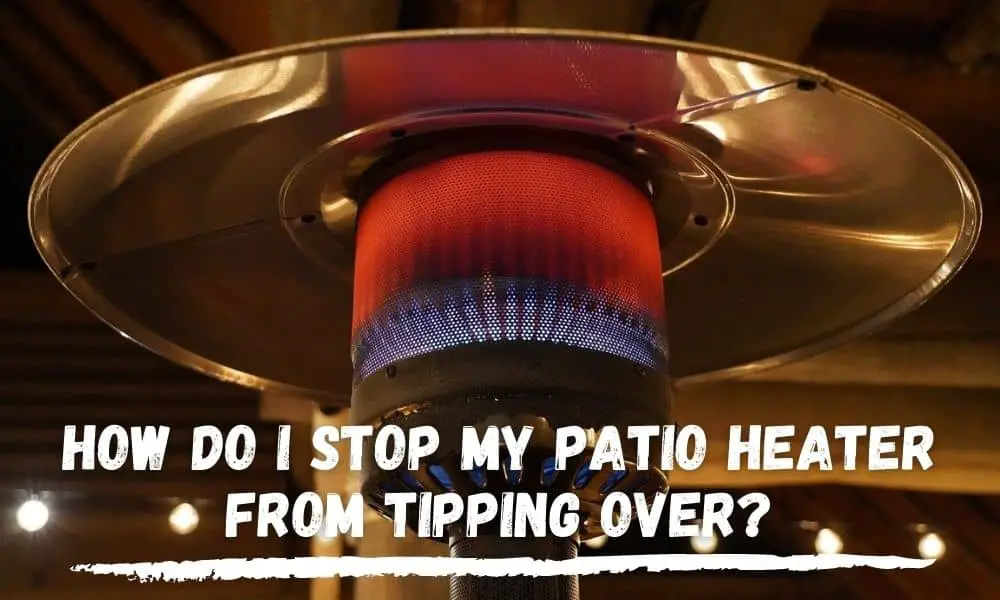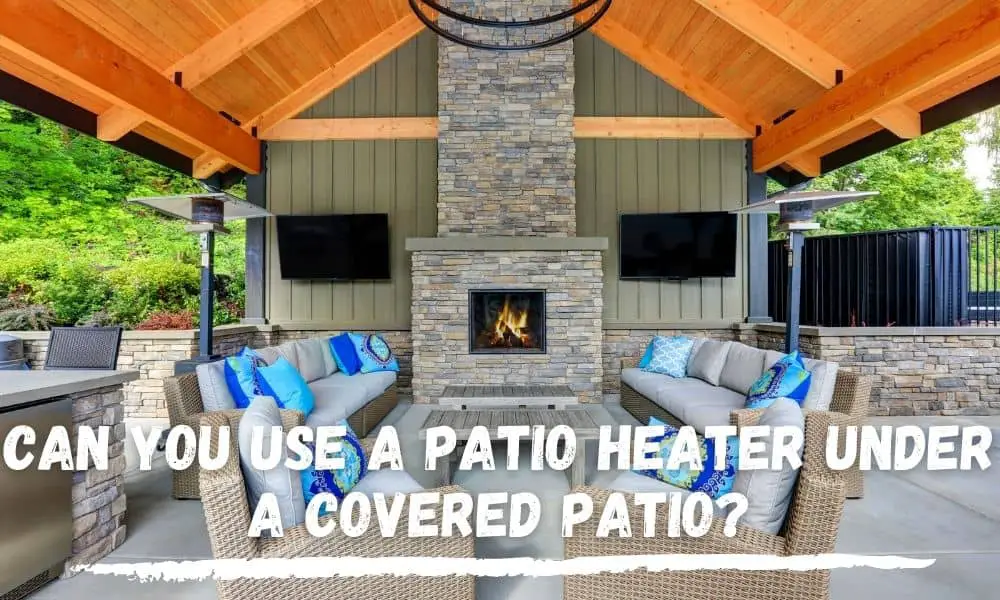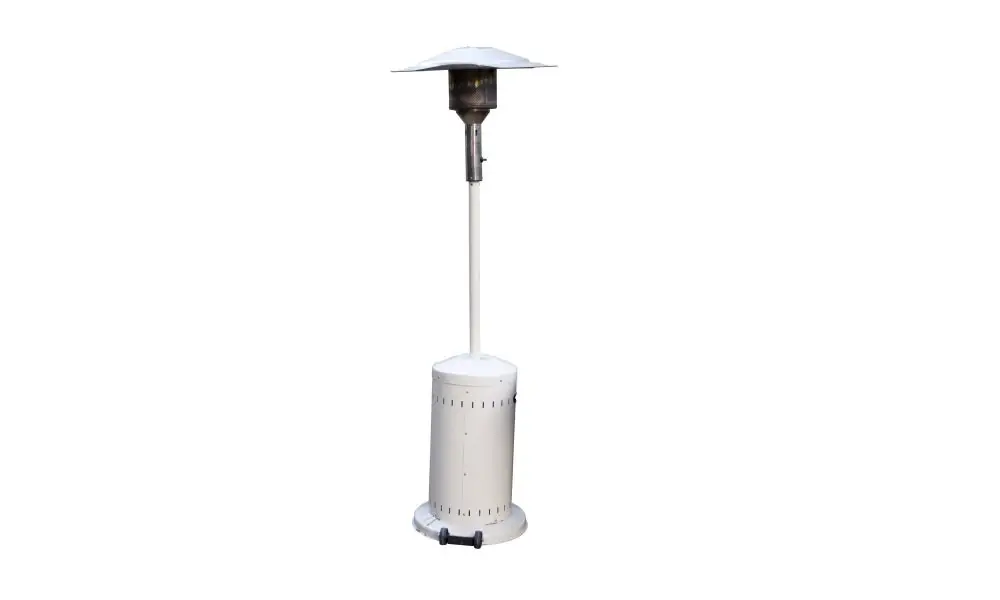Black smoke from a patio heater may interrupt your fun times. To ensure you don’t experience this nuisance, we will provide you with detailed information plus prevention methods.

We’ll tackle fuel types, oxygen: fuel ratios, dirty burner, defective parts, weather conditions, and more. Dive in!
Quick Navigation
Do Patio Heaters Give Off Carbon Monoxide?
It depends on the type of heater you’re using. Electric patio heaters don’t produce carbon monoxide. A natural gas patio heater burns natural gas. Propane patio heaters burn propane gas while an lp gas patio heater uses LPG. Also, wood-burning patio heaters use many combustible substances.
Therefore, natural gas, propane, and wood-burning patio heaters produce carbon monoxide.
Does Propane Cause Soot?
Propane is one of the most efficient fuel sources available. However, if you lack the ideal components during installation, your heater may produce black smoke.
Soot often occurs in wood-burning units with partial combustion that causes black smoke. The black smoke settles, causing soot formation.
You may be wondering why soot is coming from your propane patio heater. Here’s why:
Partial or No Propane-air Mixing
Burning propane gas leads to the production of water vapor and carbon dioxide. If burnt without mixing with oxygen, it causes black smoke. While complete burning in a patio heater is crucial, it’s almost impossible.
Having an air mixer is the best method for cleaner combustion. This way, you’ll lower black smoke and soot production in your patio heater.
Many propane gas appliances feature proper connections to the fuel line. You may decide to change from using natural to propane gas. This will prompt you to get an air mixer, preferably from your local hardware shop. You use an incorrect connection piece on your burner.
As a result, fuel burns improperly, leading to soot production.
Improper Oxygen to Propane Ratio
For adequate combustion to deter black smoke formation, the oxygen to propane ratio should be 96:4. If this ratio is larger, it results in a ‘lean burn.’ Flames from your heater during such a burn are slim and appear to disappear into the air. If the ratio is narrower, it results in a ‘rich burn.’
To achieve the right proportions of the two, propane patio heater regulators require adjustments. It would be best to get a professional gas technician to do it for you.
Sometimes a slight regulator adjustment may be inadequate to combat soot production. Hence, you’ll need a new regulator.
Dirty Burner Assembly
Dirty pilots and burners hinder proper burning. This lets some molecules escape into the air. Over time, they accumulate around your propane heater, appearing as dark soot. Besides staining the surfaces it attaches to, soot also lowers the burner system’s efficiency.
Dislodge dirt from your burner’s ports to permit uninterrupted fuel flow. Follow your manufacturer’s patio heater manuals for proper maintenance guidelines.
Defective Gas Regulator
A flawed gas regulator may result in two things:
- Permit too much natural gas or propane let-out
- Let-out inadequate natural gas or propane supply
A faulty regulator causes improper fuel combustion, whether there is excessive or inadequate supply. Make sure a certified professional takes care of your regulator adjustments. This ensures proper regulator operation and prevention of gas escape. If you don’t see a change after adjustment, then you should get a new item.
Excess or Inadequate Gas Pressure
The ideal pressure for propane is ½ psi. Pressure within your propane tank is higher than this. Thus, you require two regulators, one of your propane tank while the other at the fuel application point.
With two regulators, you lower gas pressure by around ten psi. This way, you ensure the right amount gets supplied to your unit. Should your patio heater have low pressure, the professional may adjust one of your regulators. Alternatively, they may introduce a larger diameter fuel line.
Why Does My Patio Heater Flame Out?
The main problem causing your pilot light to go out is the pilot feed tube being far from the thermocouple.
This creates a tipping-like situation where the gas valve kicks in its user safety feature. A slight adjustment to your pilot tube setting may solve this.
Look at your anti-tilt switch as it might be the reason why your pilot light goes out. If your anti-tilt switch is defective, replace it.
Another problem that may result in the pilot light going out is a breeze. Although it may be blowing at low pressure, it may extinguish it. To sort this out, gently squeeze your thermocouple and pilot feed tube together with pliers. To do this;
- Turn off your heater and detach its top and front control panel.
- Remove the bracket holding your thermocouple and pilot feed tube together for better access.
- Gently squeeze the pilot feed tube and the thermocouple making sure not to destroy them.
With your thermocouple and pilot feed tube closer, the heater won’t go off often.
A dirty thermocouple causes your pilot light to go out hence needs cleaning. A dirty propane burner also causes smoke production. Therefore, keep your propane burner clean too.
The blockage of the gas valve orifice also results in flame-out. Make sure you clean or replace it, as discussed in the previous question.
Another problem could be the bending of the adapter hose. Straightening the propane gas line tubing could solve the problem. However, if your adapter hose has other issues like perforations, get a new one.
Confirm your connection fittings aren’t loose. You can use the leak test to check for leakages.
Also, a defective striker switch may prevent lighting. You’ll need to get a new piazza switch. A professional should help you replace your striker piazza switch.
Clogging of the burner venturi tube may result in the problem.
- Disassemble your unit and locate the venturi feed tube.
- Insert a pipe cleaner through the venturi tube.
- Thoroughly clean the venturi tube by twisting the pipe cleaner to eliminate all debris.
- You may also use compressed air to clean. Compressed air eases and enhances cleaning.
Uneven gas flow may also be the cause. Reduce volume setting for proper flow.
You may keep asking yourself, ‘Why is my burner flame low?’
Sometimes it may be your propane level. Your propane bottle may also freeze up. Propane temperature should be around 40-degrees for proper functioning. To solve this:
- Wrap propane tank with an electric blanket
- Secure it with duct tape
- Plug in the blanket
- Open the propane gas regulator valve slowly
- Remove the blanket after using your propane bottle
Conclusion
Indeed, there are many causes of black smoke and soot. You can minimize this by cleaning dirty parts, replacing spoilt ones, and adjusting out-of-line components.
Also, consider a new heater, especially electric ones that don’t produce black smoke. Don’t forget to check patio heater manuals to ensure proper heater maintenance.





